Related Research Articles
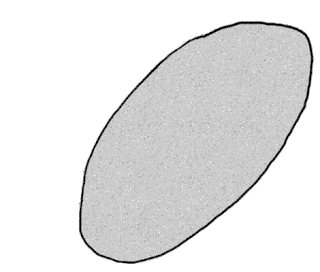
In archaeology, in particular of the Stone Age, lithic reduction is the process of fashioning stones or rocks from their natural state into tools or weapons by removing some parts. It has been intensely studied and many archaeological industries are identified almost entirely by the lithic analysis of the precise style of their tools and the chaîne opératoire of the reduction techniques they used.
In lithic analysis, an eraillure is a flake removed from a lithic flake's bulb of force, which is a lump left on the ventral surface of a flake after it is detached from a core of tool stone during the process of lithic reduction. The mechanics of eraillure formation are related to the propagation of a Hertzian cone of force through the cryptocrystalline matrix of the stone, but the particulars are poorly understood. Eraillures usually form only when a hammerstone is used for lithic reduction, and then only occasionally; use of 'soft' hammer fabricators made from bone, antler, and wood produce different flake characteristics but may also produce an eraillure in rare cases.

In archaeology, a lithic flake is a "portion of rock removed from an objective piece by percussion or pressure," and may also be referred to as a chip or spall, or collectively as debitage. The objective piece, or the rock being reduced by the removal of flakes, is known as a core. Once the proper tool stone has been selected, a percussor or pressure flaker is used to direct a sharp blow, or apply sufficient force, respectively, to the surface of the stone, often on the edge of the piece. The energy of this blow propagates through the material, often producing a Hertzian cone of force which causes the rock to fracture in a controllable fashion. Since cores are often struck on an edge with a suitable angle (x<90°) for flake propagation, the result is that only a portion of the Hertzian cone is created. The process continues as the flintknapper detaches the desired number of flakes from the core, which is marked with the negative scars of these removals. The surface area of the core which received the blows necessary for detaching the flakes is referred to as the striking platform.
In lithic analysis, a subdivision of archaeology, a bulb of applied force is a defining characteristic of a lithic flake. Bulb of applied force was first correctly described by Sir John Evans, the cofounder of prehistoric archeology. However, bulb of percussion was coined scientifically by W.J. Sollas. When a flake is detached from its parent core, a portion of the Hertzian cone of force caused by the detachment blow is detached with it, leaving a distinctive bulb on the flake and a corresponding flake scar on the core. In the case of a unidirectional core, the bulb of applied force is produced by an initiated crack formed at the point of contact, which begins producing the Hertzian cone. The outward pressure increases causing the crack to curve away from the core and the bulb formation. The bulb of applied force forms below the striking platform as a slight bulge. If the flake is completely crushed the bulb will not be visible. Bulbs of applied force may be distinctive, moderate, or diffuse, depending upon the force of the blow used to detach the flake, and upon the type of material used as a fabricator. The bulb of applied force can indicate the mass or density of the tool used in the application of the force. The bulb may also be an indication of the angle of the force. This information is helpful to archaeologists in understanding and recreating the process of flintknapping. Generally, the harder the material used as a fabricator, the more distinctive the bulb of applied force. Soft hammer percussion has a low diffuse bulb while hard hammer percussion usually leaves a more distinct and noticeable bulb of applied force. Pressure flake also allowed for diffuse bulbs. The bulb of percussion of a flake or blade is convex and the core has a corresponding concave bulb. The concave bulb on the core is known as the negative bulb of percussion. Bulbs of applied force are not usually present if the flake has been struck off naturally. This allows archaeologists to identify and distinguish natural breakage from human artistry. The three main bulb types are flat or nondescript, normal, and pronounced. A flat or nondescript bulb is poorly defined and does not rise up on the ventral surface. A normal bulb on the ventral side has average height and well-defined. A pronounced bulb rises up on ventral side and is very large.
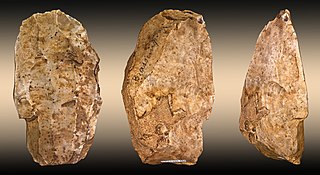
In archaeology, a lithic core is a distinctive artifact that results from the practice of lithic reduction. In this sense, a core is the scarred nucleus resulting from the detachment of one or more flakes from a lump of source material or tool stone, usually by using a hard hammer percussor such as a hammerstone. The core is marked with the negative scars of these flakes. The surface area of the core which received the blows necessary for detaching the flakes is referred to as the striking platform. The core may be discarded or shaped further into a core tool, such as can be seen in some types of handaxe.
In archaeology, a prismatic blade is a long, narrow, specialized stone flake tool with a sharp edge, like a small razor blade. Prismatic blades are flaked from stone cores through pressure flaking or direct percussion. This process results in a very standardized finished tool and waste assemblage. The most famous and most prevalent prismatic blade material is obsidian, as obsidian use was widespread in Mesoamerica, though chert, flint, and chalcedony blades are not uncommon. The term is generally restricted to Mesoamerican archeology, although some examples are found in the Old World, for example in a Minoan grave in Crete.
In lithic reduction, the striking platform is the surface on the proximal portion of a lithic flake on which the detachment blow fell; this may be natural or prepared. Types of striking platforms include:
A stone tool is, in the most general sense, any tool made either partially or entirely out of stone. Although stone tool-dependent societies and cultures still exist today, most stone tools are associated with prehistoric cultures that have become extinct. Archaeologists often study such prehistoric societies, and refer to the study of stone tools as lithic analysis. Ethnoarchaeology has been a valuable research field in order to further the understanding and cultural implications of stone tool use and manufacture.
In archaeology, lithic analysis is the analysis of stone tools and other chipped stone artifacts using basic scientific techniques. At its most basic level, lithic analyses involve an analysis of the artifact’s morphology, the measurement of various physical attributes, and examining other visible features.
In archeology, a uniface is a specific type of stone tool that has been flaked on one surface only. There are two general classes of uniface tools: modified flakes—and formalized tools, which display deliberate, systematic modification of the marginal edges, evidently formed for a specific purpose.
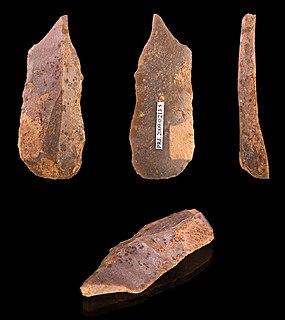
In the field of lithic reduction, a burin is a type of handheld lithic flake with a chisel-like edge which prehistoric humans used for engraving or for carving wood or bone.

In archaeology, a blade is a type of stone tool created by striking a long narrow flake from a stone core. This process of reducing the stone and producing the blades is called lithic reduction. Archaeologists use this process of flintknapping to analyze blades and observe their technological uses for historical peoples.
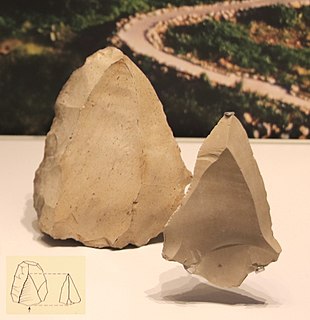
The Levallois technique is a name given by archaeologists to a distinctive type of stone knapping developed by precursors to modern humans during the Palaeolithic period.
Termination may refer to:
In lithic analysis in archaeology the cortex is the outer layer of rock formed on the exterior of raw materials by chemical and mechanical weathering processes. It is often recorded on the dorsal surface of flakes using a three class system: primary, secondary, and tertiary. The amount of cortex present on artifacts in an archaeological assemblage may indicate the extent of lithic reduction that has occurred. Primary, secondary, and tertiary designations for flakes are generally determined by relative amounts of cortex presented on the dorsal surface. Some archaeologists classify flakes with no cortex as tertiary, flakes with some cortex as secondary, and flakes with all cortex as primary, whereas others may distinctions at every third or half of the dorsal surface covered. Differences in how archaeologists classify the amount of cortex and the results of experimental archaeological tests demonstrating moderate correlation between amount of cortex and stage of reduction, have limited the validity of assumptions based on amount of cortex solely.
Retouch is the act of producing scars on a stone flake after the ventral surface has been created. It can be done to the edge of an implement in order to make it into a functional tool, or to reshape a used tool. Retouch can be a strategy to reuse an existing lithic artifact and enable people to transform one tool into another tool. Depending on the form of classification that one uses, it may be argued that retouch can also be conducted on a core-tool, if such a category exists, such as a hand-axe.
Lithic technology includes a broad array of techniques and styles in archaeology, which are used to produce usable tools from various types of stone. The earliest stone tools were recovered from modern Ethiopia and were dated to between two-million and three-million years old. The archaeological record of lithic technology is divided into three major time periods: the Paleolithic, Mesolithic, and Neolithic. Not all cultures in all parts of the world exhibit the same pattern of lithic technological development, and stone tool technology continues to be used to this day, but these three time periods represent the span of the archaeological record when lithic technology was paramount. By analysing modern stone tool usage within an ethnoarchaeological context insight into the breadth of factors influencing lithic technologies in general may be studied. See: Stone tool. For example, for the Gamo of Southern Ethiopia, political, environmental, and social factors influence the patterns of technology variation in different subgroups of the Gamo culture; through understanding the relationship between these different factors in a modern context, archaeologists can better understand the ways that these factors could have shaped the technological variation that is present in the archaeological record.
In archaeology, a flake tool is a type of stone tool that was used during the Stone Age that was created by striking a flake from a prepared stone core. People during prehistoric times often preferred these flake tools as compared to other tools because these tools were often easily made, could be made to be extremely sharp & could easily be repaired. Flake tools could be sharpened by retouch to create scrapers or burins. These tools were either made by flaking off small particles of flint or by breaking off a large piece and using that as a tool itself. These tools were able to be made by this "chipping" away effect due to the natural characteristic of stone. Stone is able to break apart when struck near the edge. Flake tools are created through flint knapping, a process of producing stone tools using lithic reduction. Lithic reduction is the removal of a lithic flake from a larger stone in order to reach the desired tool shape and size. The beginning stone is called the flake lithic core. There are three steps to lithic reduction:
- Hard hammer percussion is the first step. It involves knocking off the larger flakes to achieve the desired lithic core for the flake tool. In using hard hammer percussion the flake tools were made by taking metamorphic or igneous rock such as granite or quartz and striking it against the stone. This method was often used to flake large core flakes of hard rock.
- Soft hammer percussion is the second step. It involves using a hammer made of bone, which was often antler, in order to knock off flakes from the lithic core. Animal antlers such as moose, deer and elk were often the most common ones used. It allows the user more control over the size and shape of the flakes knocked off. Soft hammer percussion was also used when the stone was more brittle.
- Pressure flaking is the final step. It involves using a piece of bone, antler, or piece of hardwood in order to have more control of the flakes knocked off of the lithic core. One simply applies outward and downward pressure to achieve the final flake tool.
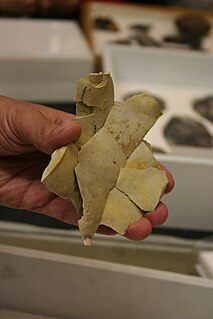
Debitage is all the material produced during the process of lithic reduction and the production of chipped stone tools. This assemblage includes, but is not limited to, different kinds of lithic flakes and lithic blades, shatter and production debris, and production rejects.
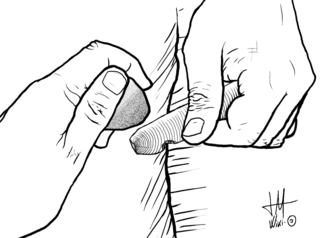
The microburin technique is a special procedure for cutting up lithic blades which yields fragments that can be used in the manufacture of utensils. The usable fragments are basically geometric microliths. This technique has been recorded through the Old World, from at least the Mesolithic. It has also been recorded from the later phases of the Upper Paleolithic, as triangular and trapeze shaped microliths have been found from the end of the French Magdalenian although they are very rare. The microburin blow technique has not been found, at present, in the New World. The technique consists of taking a blade and placing its upper end against a support with a sharp edge. A notch is then made and enlarged using light blows or by pressing the edge of the piece against the angled edge of the support. The notch is enlarged until the lithic blade snaps with a gentle but positive action (flection).
References
- Andrefsky, William, Jr. (1998) Lithics: Macroscopic approaches to analysis. Cambridge University Press, Cambridge.